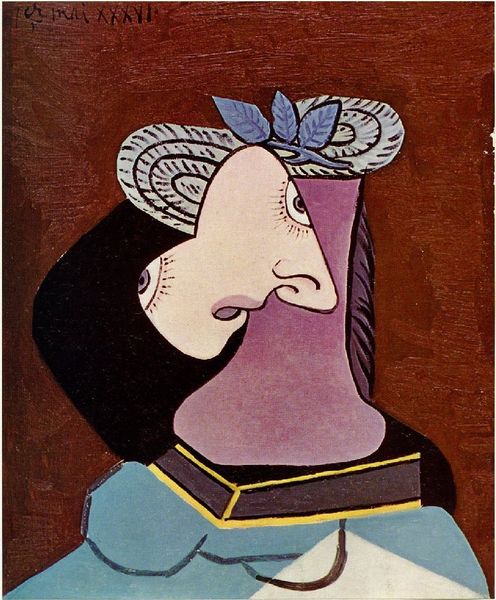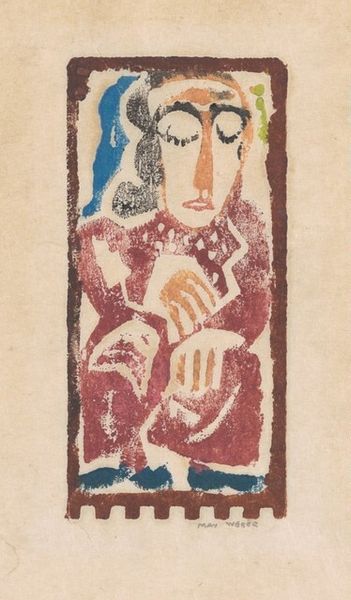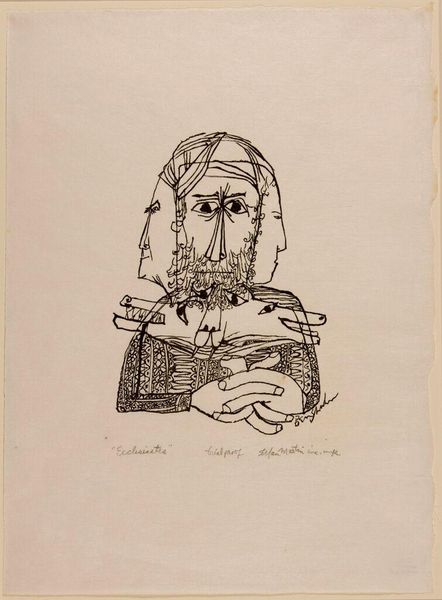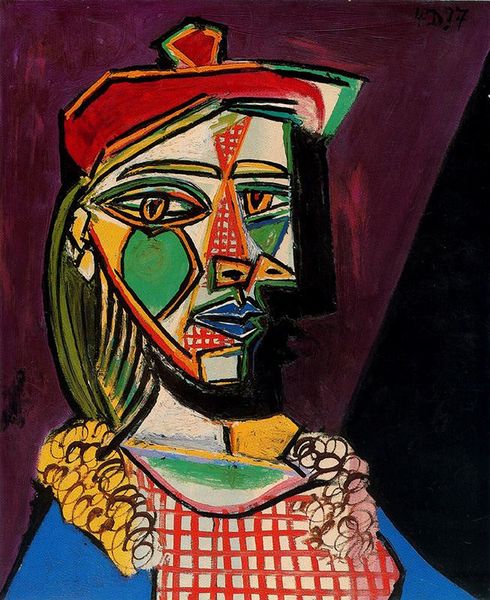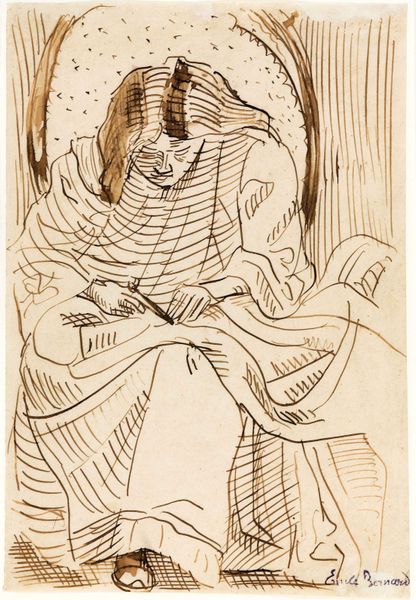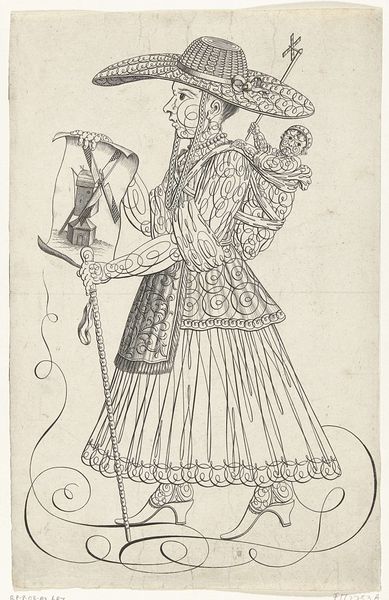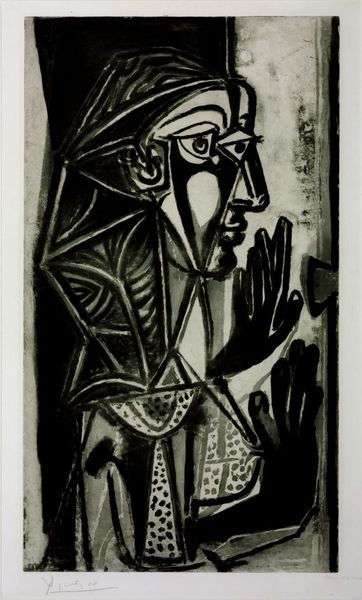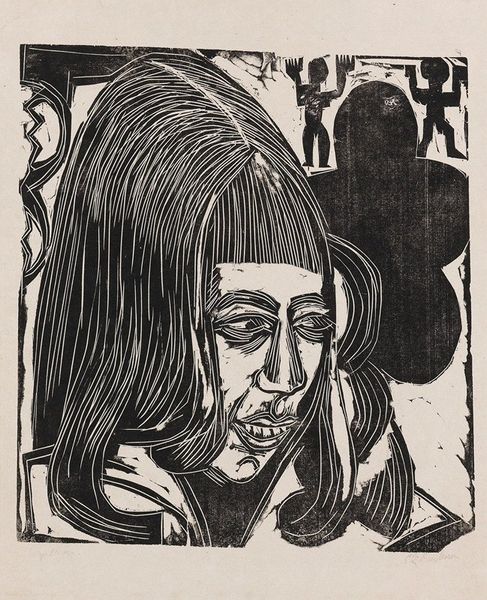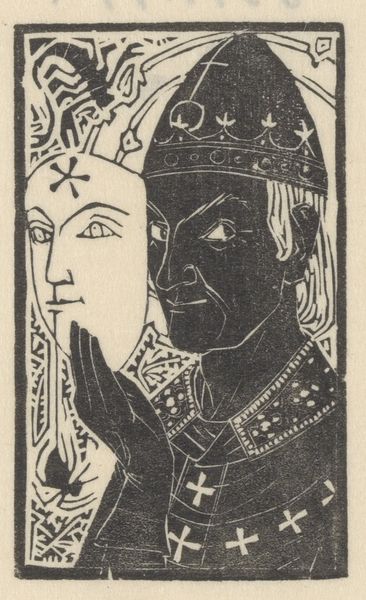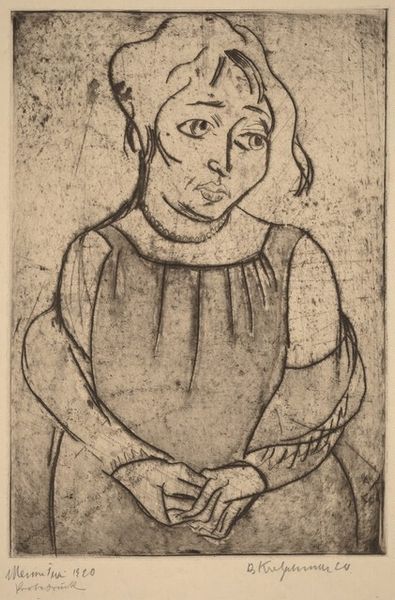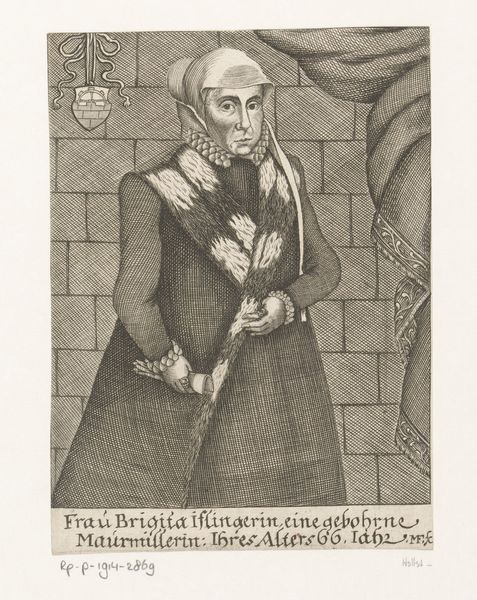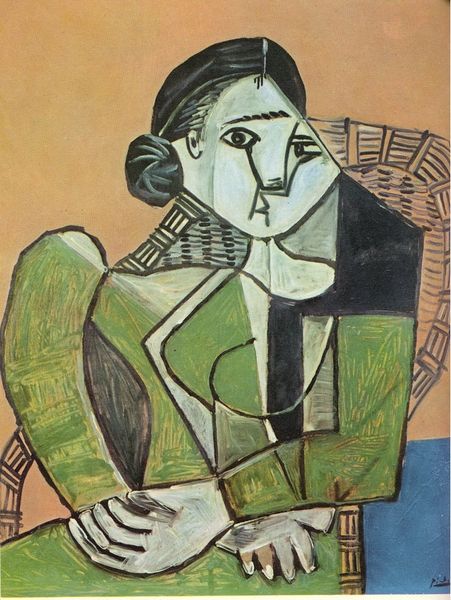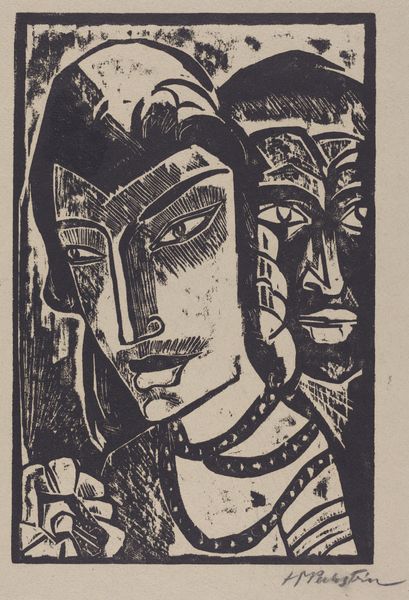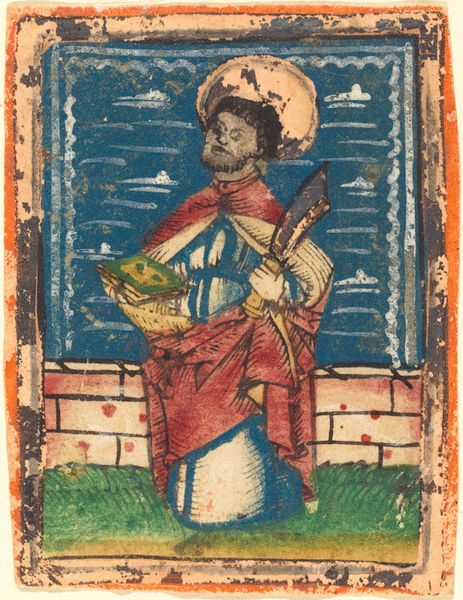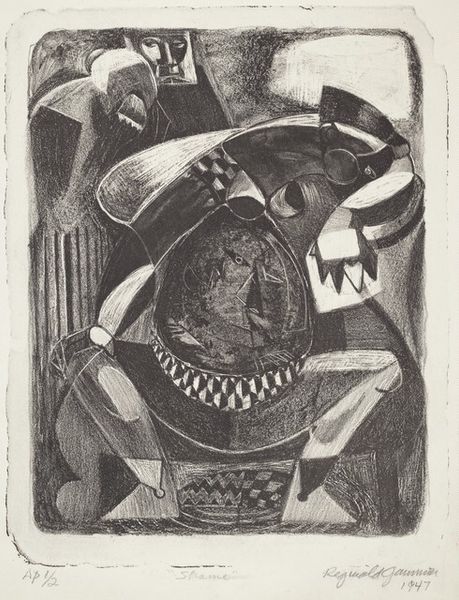
Dimensions: image: 645 x 533 mm
Copyright: © Succession Picasso/DACS 2014 | CC-BY-NC-ND 4.0 DEED, Photo: Tate
Curator: Here we have Pablo Picasso’s striking "Portrait of a Woman after Cranach the Younger," currently held at the Tate Collections. The piece reimagines a Renaissance portrait through Picasso’s distinctive lens. Editor: My initial reaction is, wow, this is boldly chaotic yet regal. The colors pop, but there’s also this fractured feel, like looking at history through a funhouse mirror. Curator: Exactly, and it’s essential to view this through the context of Picasso's broader engagement with art history, particularly his dialogue with master painters. He’s not just copying Cranach, but actively reshaping him. What does it mean to be a woman in a time of avant-garde art? Editor: I see the gold chains and the formal attire as a nod to the original portrait, but Picasso’s signature abstraction really shakes things up. It’s as if he’s saying, "Let’s break down these old ideas of beauty and power." Curator: Absolutely, and by fragmenting the image, Picasso may be commenting on the fragmented nature of identity itself, especially for women navigating historical and social constraints. Editor: It kind of makes you wonder what Cranach would have thought, doesn’t it? But for me, it's a playful reinterpretation that both honors and questions tradition. Curator: Ultimately, it's a powerful exploration of cultural memory, artistic influence, and gendered representation, which continues to spark dialogue today. Editor: Agreed, this artwork’s reverberating energy really makes you think.
Comments
tate 2 months ago
⋮
http://www.tate.org.uk/art/artworks/picasso-portrait-of-a-woman-after-cranach-the-younger-p11368
Join the conversation
Join millions of artists and users on Artera today and experience the ultimate creative platform.
tate 2 months ago
⋮
Although he had already made one linocut in 1939 (Pour la Tchécoslovaquie. Hommage à un pays martyr), Picasso only started exploring this technique in earnest in 1953-4, with the printer Hidalgo Arnéra in Vallauris. At this time he began to experiment with making linocuts in different colours on separate blocks, which he would then superimpose on the same sheet of paper. He first attempted Portrait of a Woman after Cranach the Younger in two colours on 3 July 1958, but the following day returned to the same subject more ambitiously. On 4 July he made five different linoleum blocks – sepia, yellow, red, blue and black – to be superimposed on each other in that order. He then proceeded to print different proofs, in the process making two different states of the colour blocks and three of the black in order to arrive at the final image. The final version was printed on white Arches wove paper in an edition of approximately fifteen artist’s proofs (of which this is one) plus fifty signed and numbered copies, published by the Galerie Louise Leiris, Paris.
